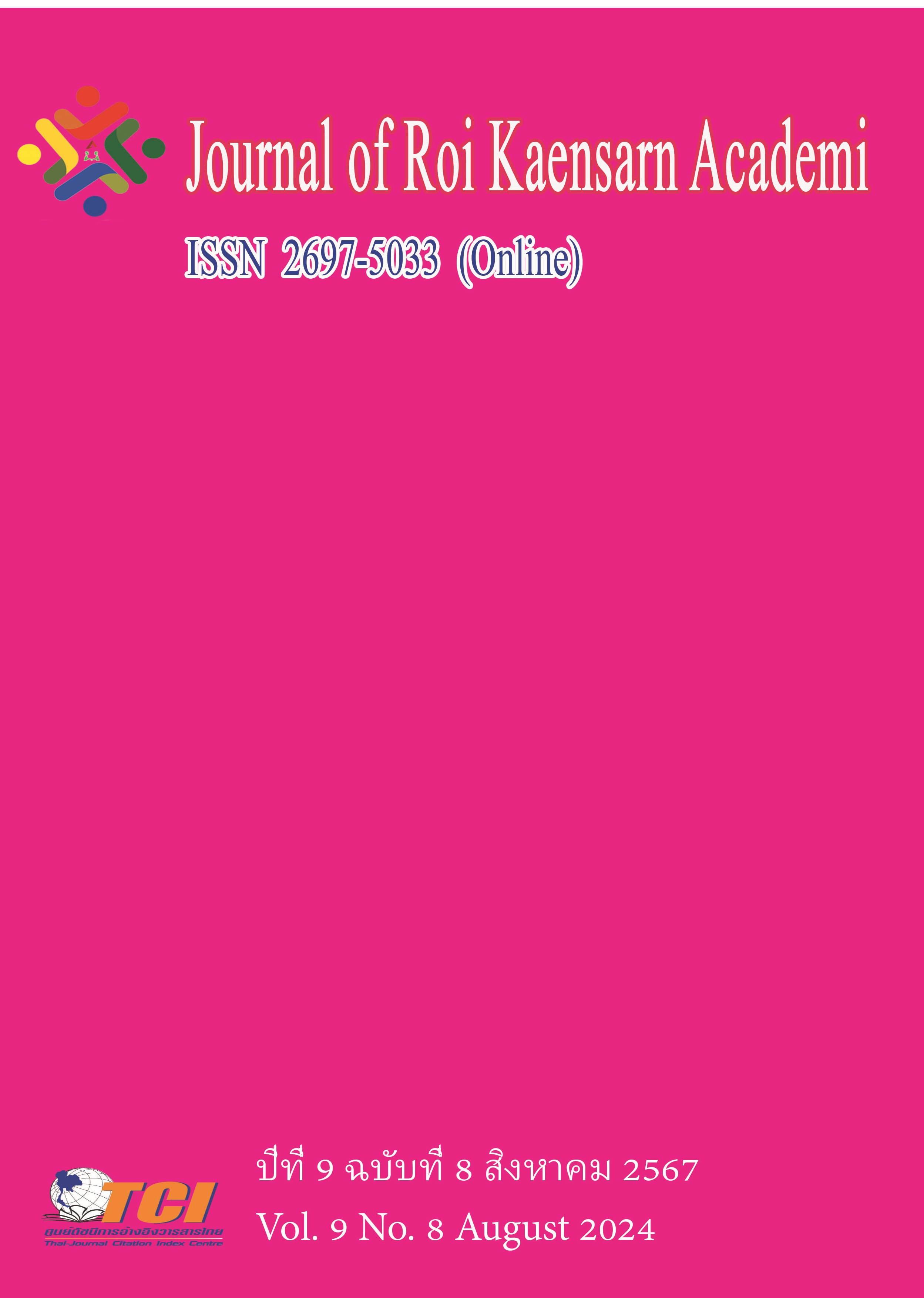The Zhuang Nursery Rhymes in Guangxi: Local Wisdom, Cultural Protection and Inheritance
Main Article Content
บทคัดย่อ
As an important part of traditional Zhuang culture, Zhuang nursery rhymes play an important social and cultural function in the process of the historical development of Zhuang society, showing a distinctive national style and local wisdom, especially in the Guangxi region. This research aimed to study: (1) The local wisdom contained of Zhuang nursery rhymes in Guangxi. (2) The problems and guidelines on the protection and inheritance of Zhuang nursery rhymes in Guangxi. This research mainly adopts qualitative research methods. The research tools used mainly include basic surveys, observations and interviews. 5 key informants, 8 casual inforinants and 18 general informants were selected. The data was collected through written documents and field work, then organized and analyzed, and presented using descriptive analysis method. The results of the research are as follows: (1) Zhuang nursery rhymes in Guangxi are an important carrier for inheriting Zhuang culture and wisdom, and contain local wisdom in cultivating moral values, regulating interpersonal relationships, inheriting culture and traditional customs, and using nature for practice and creation. (2) At present, the protection and inheritance of Zhuang nursery rhymes in Guangxi is facing the problems of aging singers, weak inheritance consciousness, lack of language carriers, and single dissemination methods and contents. By analyzing the factors that caused the problem, the following guidelines are proposed: enhance the awareness of cultural identity and inheritance, improve the status of the Zhuang language as the mother tongue, innovate the dissemination methods and contents of Zhuang nursery rhymes, and give play to the guiding and supporting role of the government. The results of this research have certain reference value for government departments to formulate cultural inheritance policies, for researchers to conduct further in-depth studies of Zhuang nursery rhymes, for analyses of nursery rhymes of other ethnic groups, and for the creative development of cultural industries.
Article Details
เอกสารอ้างอิง
Chen, Z. L. (2020). Cihai. Shanghai: Shanghai Dictionary Publishing House.
Davis,W. (2009). The Wayfinders: Why Ancient Wisdom Matters in the Modern World. House of Anansi Press.
Feng, T. Y. (2001). Chinese Cultural Dictionary. Wuchang: Wuhan University Press.
Levinson , D. (1996). Encyclopedia of World Cultures. London: Macmillan.
Li, L. (2017). A Comparative Research on the Moral Education Function of Zhuangtai Nursery Rhymes. Journal of Kaifeng Institute of Education. (09), 243-245.
Luo, L. L. (2019). Acquisition and Inheritance of Zhuang Folk Nursery Rhymes During the Sensitive Period of Children. Journal of Kaifeng Institute of Education. (10), 230-232.
Pan, Y. Y. (2021). Acquisition and Inheritance of Folk Nursery Rhymes of the Zhuang Nationality During the Sensitive Period of Children. Drama House. (26), 111-112.
Qin, D. (2018). A Comparative Research on the Common Features of Zhuang-Thai Nursery Rhymes. Guangxi Ethnic Studies. (02), 152-159.
Qin, D. (2019). Selected Zhuang Nursery Rhymes (English Version). Guangzhou: World Book Publishing Company.
Qin, D. (2020). A Comparison of the Rhyme Forms of Zhuangying Nursery Rhymes. Journal of Hubei Open Vocational College. (20), 189-191+194.
Tan, L. (2018). A Comparative Research on the Language Style and Rhetorical Art of Zhuangying Nursery Rhymes. Journal of Jiamusi Vocational College. (10), 294-295.
Wei, Q. L. (1988). An Overview of Zhuang Folklore. Nanning: Guangxi People's Publishing House.
Williams, R. (2011). Culture and Society (Gao Xiaoling, Trans.). Changchun: Jilin Publishing Group Co., Ltd.
Yang, Y. N. (2016). A Comparative Analysis of the Characteristics of Word Selection of Zhuangtai Nursery Rhymes. Changjiang Series. (30), 60-61.
Yang, Y. N. (2017). Comparative Analysis of Zhuangtai Nursery Rhyme Formats. Science and Education Wenhui (Mid-day Journal). (02), 185-187. doi:10.16871/j.cnki.kjwhb.2017.01.082.

